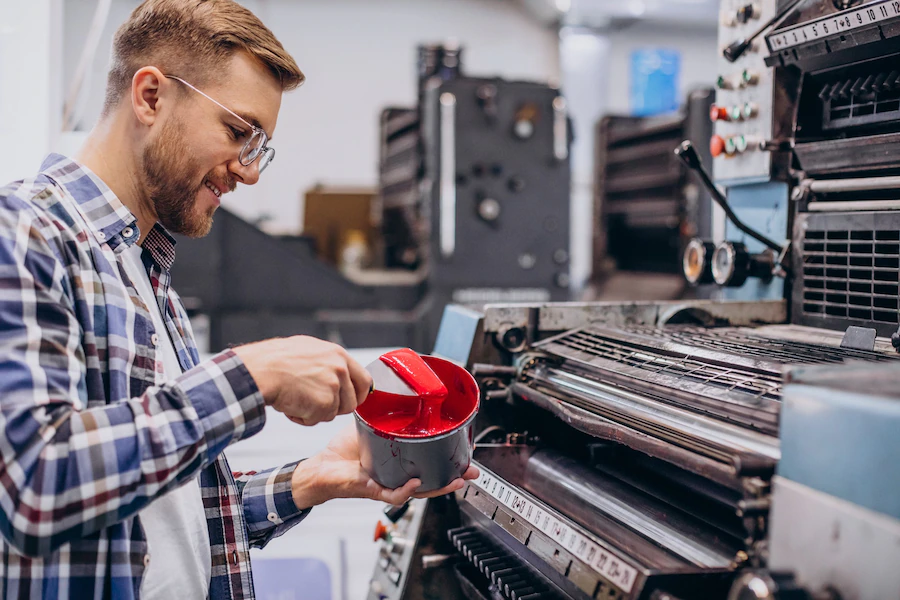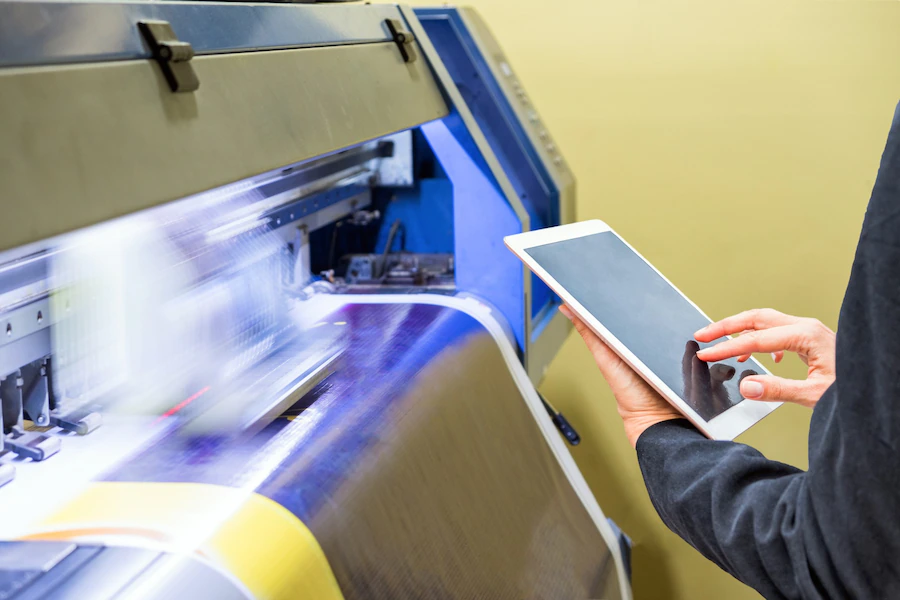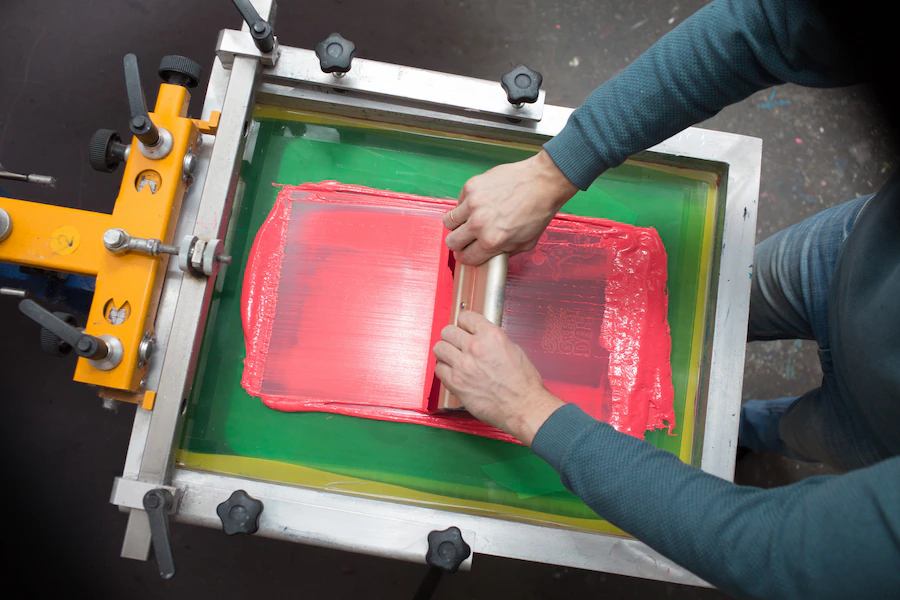Screen Printing with its vibrant colors, long-lasting durability and endless designs, has had a prominent place in both the commercial and artistic printing fields. From its earliest beginnings until its transformation to the modern age Screen printing is still an exciting subject to investigate. This article explores this fascinating world and sheds the light on this adored art form’s techniques, its history development, application, and evolution.
The Process Behind Screen Printing

What Exactly Is Screen Printing?
Screenprinting, also known as serigraphy or silkscreen is a multi-faceted printing method using a mesh print ink on a surface other than areas that are blocked by stencils. This technique allows for a high level of clarity and vivid colors and is able to be applied with a variety of materials including papers, fabrics, paper ceramics, and many more. Visit this site for further information about screening printing techniques.
Screen Printing Process Screen Printing Process
The process starts by forming images on the screen. Typically, this is done using a light-sensitive emulsion before exposing it to UV light. The emulsion then hardens and creates a stencil that blocks the image from radiation. Once the stencil is set it is then put on the substrate that will be printed. the ink is applied to the stencil by using a squeezer. Ink spreads across the wide areas of the mesh and onto the substrate below, producing an exact reproduction of the image. The material printed is then set to dry or cured, which ensures the longevity of the design.
An Overview Of Screen printing’s History Of Screen Printing
Ancient Roots
Screen printing’s roots go through the Song Dynasty in China, from 1279-1279 AD in which it was utilized to print artistic patterns onto paper and fabrics. The technique then was introduced into Japan as well as other Asian nations, and was used to produce detailed illustrations and patterns on fabrics.
Modern Evolution
Screen printing came into Europe around the turn of the 18th century. However, it was during the 20th century when it began to gain substantial popularity. The development of photo-reactive chemicals led commercial printers as well as artists to produce more elaborate and exact patterns. In World War II, screen printing played a crucial role in the production of documents for military and propaganda which established its role within the printing business for commercial purposes.
At the turn of the 20th century, during the 20th and early 21st centuries, the Pop Art movement further popularized screen printing. Andy Warhol’s famous “Marilyn Diptych” introduced it to the spotlight as a genuine artistic medium. Nowadays, screen printing is widely used in a variety of areas, such as graphics design, fine art and fashion.
Screen Printing During The Digital Age

A Changing Landscape
Thanks to the advancement of digital printing The screen printing industry has seen significant change. The use of computers has led to greater precision in designs as well as cut down on the time and energy necessary to make stencils. The printing process is now automated by machines which allows for more print runs as well as increased effectiveness.
The Role Of Artists And Artisans
Despite the rapid growth of technology that is digital There is a huge demand for handmade printed screen prints made by hand. Customers and artists alike are drawn to the small variation and distinct characteristics that result from hand-pulled touch of a human. The balance of the traditional and modern techniques creates a constantly developing and exciting area.
Screen Printing: The Application Of Screen Printing
Fashion Industry
Screen printing is utilized extensively in the fashion world due to its ability to print vivid, long-lasting images on textiles. This is a popular method for printing t-shirts which allows for complex design and production in mass. You can check this website for information.
Fine Poster Design And Fine Art
Famous artists such as Andy Warhol have used screen printing to create vivid stunning artworks. Its capability to layer colors and produce the highest levels of detail make it perfect for posters as well as high-end art. Screen prints of limited edition are highly sought-after by art lovers.
Industrial Uses
Beyond fashion and art Screen printing has many industrial uses. It is utilized to make printed circuit boards and ceramic decals and even signs. The versatility and longevity of the process are the main reasons it is a preferred method across a variety of industries.
From Ink from Ink Imagination
Screen Printing is a dynamic, exciting and fascinating field that bridges traditional methods and the latest technological advancements. From the complex process through its wide-ranging applications that continues to stir people, inspire audiences and encourage the development of. Today, in a world where the digital age is a dominant force screens, they remind us of the hand-crafted artistic tradition’s long-lasting impact and appeal.
Moving forward and forward, we know that screen printing is going to keep evolving, changing to, and thrill. If it’s stunning art or a vividly printed T-shirt or an intricately engineered circuit board impact of screen printing can be seen present. The process is really a voyage from the ink pen to our imagination.
Screen printing’s Influence Upon Culture And Society
Screen Printing As Well As Pop Culture
From posters of concerts to graphic tees, screen printing has fundamentally changed the world of pop culture. Its capacity to produce vivid printed prints that are mass-produced is a popular method of disseminating simple messages and images. Images that are iconic, such as Che Guevara’s portrait and peace symbols were widely distributed through posters printed on screen and clothes, which shows how screen printing has affected and helped reflect changes in society.
Screen Printing And Activism
Screen Printing has also played an integral role in politics as well as social activism. Due to its ease of access and ability to produce large quantities the process has been utilized to make apparel and posters to increase awareness and encourage the support of various causes. From civil rights struggles from the 1960s onwards to contemporary environmental movements, screen printing is an effective method for bringing about transformation.
Investigating The Creative Potential Of Screen Printing
Screen Printing Is A Medium To Express Yourself
Screen printing serves as a method of communicating – it’s a method for artists to express their visions into reality. The versatility of the process allows it to be used in a range of styles, ranging from minimal linework to elaborate multicolored designs. Artists can make a range of artistic effects by manipulating the elements of transparency, color, and layers.
Screen Printing Within The Education Sector
Screen printing is a popular subject in education. It is usually introduced to students as a simple and hands-on way to gain knowledge about design and art. Screen printing helps students grasp basic concepts such as color theory, composition as well as the effects of negative and positive space. Its tangible method also provides a pleasing alternative to the often digital-eccentric educational system for art and design.
Future Of Screen Printing
Sustainability Of Screen Printing
Like many other industries the sustainability issue has been the main focus of screen printing. There are new developments being produced using Eco-friendly materials and inks, and the trend is growing towards local-sourced, ethically made screen prints. This trend is a reflection of a larger society’s shift to sustainable practices which opens new avenues as well as challenges in the world of screen printing.
Technology Innovations, And Evolving Technology
The development of digital printing, including Direct-to-Garment (DTG) printing is bringing opportunities for competition as well as possibilities in the field of screen printing. Though these techniques have some benefits, such as the ability to customize and faster setup for smaller prints, screen printing is the best choice for the production of large quantities, longevity, and the vibrancy of colors. It is possible that the future will balance between these two technologies, with each one chosen because of its strengths, based upon the requirements of the particular project.
Conclusion
Screen Printing is the union of the arts and tradition, as well as industry, inks and imagination. It’s a testimony to humanity’s creativity and innovation and is continually changing to satisfy our changing tastes and needs.
From its humble beginnings in early China to its ubiquitous existence in the present, screen printing hasn’t been able to endure, but has also flourished. Looking to the future, there is one thing that’s certain: the realm of screen printing is bound to amaze, excite and challenge the limits of the possibilities.
Additional:




























